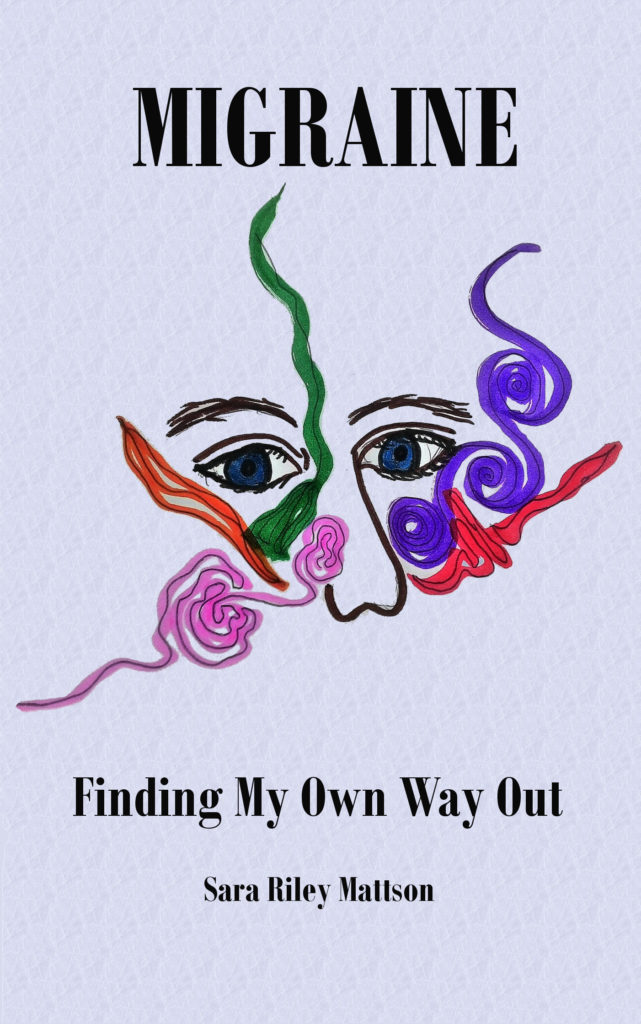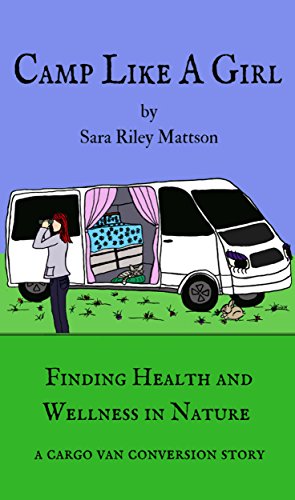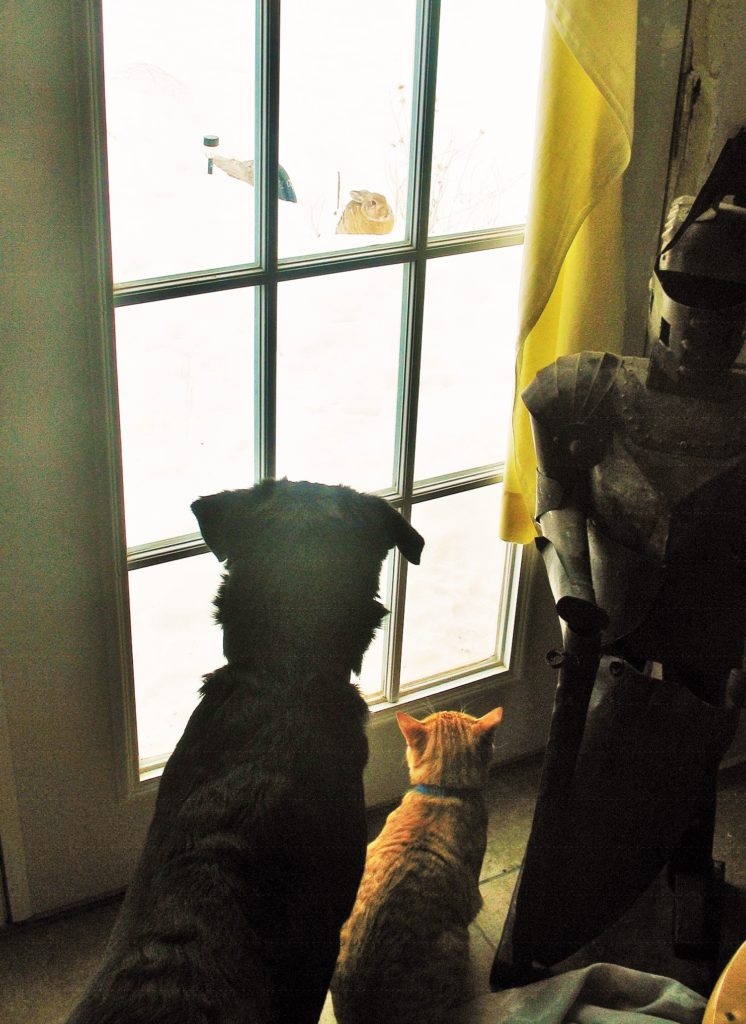with 12/6/18 addtions
Disclaimer: the author does not hold any guarantee for these ideas nor any responsibility for monetary or health loss due to trying these ideas. It is the responsibility of each individual to test, monitor, and exercise due diligence in trying different ideas to see if they work.
When even choosing a place to live in the first place, many with Multiple Chemical Sensitivity have to try to choose the least of all evils.
I have two tips for you:
First, generally, I recommend choosing “static” chemicals (such as new paint) over “active” chemicals (such as neighbors’ fabric softener or a complex that will be spraying pesticide). “Active” chemicals will keep coming on, more and more, while “static” chemicals will reduce over time, especially if open windows or air purifiers are used. Also, static chemicals are more controllable most of the time, meaning you might be able to cover some of them with foil or barrier cloth.
Second, I would almost always pick chemicals over mold even though my MCS is off the charts!!!! 🙂 This is because mold will generally cross-contaminate possessions a lot more than chemicals will, except pesticides. Even worse, mold is “alive & active,” vs. chemicals which can be very dangerous, but at least they can’t infect sinuses, lungs, skin. There are those who may need to choose mold over chemicals, especially if they did not have mold as their trigger and do not seem to be sensitive to mold, especially if the mold is one of the “less toxic” ones. I believe all indoor mold is toxic to some extent, but some is much more toxic, including Stachybotrys and Chaetomium. Note: That does not mean other kinds of mold can’t make people very, very sick, because they can. It may depend on what the person has already been exposed to.
So, here are my tips for living in chemicals:
Foil over stuff. This has been to me the greatest help by far. Just be careful not to trap any moisture or condensation behind foil, especially an external wall. Double and triple-check this on external walls every season change. Summertime can have huge risks for condensation on the back of the foil on a foiled wall if the interior of the house is cooler than outside, especially with a reservoir cladding like brick or manufactured stone. http://www.greenbuildingadvisor.com/blogs/dept/musings/when-sunshine-drives-moisture-walls Use foil tape instead of regular tape to block some of the tape adhesive. Ours has always come up without leaving adhesive behind!!! Foil will even block mold spores and mold toxins if it can be covered thoroughly without causing condensation behind.
However, I do NOT recommend touching, walking on, or storing clothes on foil, because the ions can come off. Even on “solid” aluminum vs. flimsy foil, I got silver on the bottom of my feet from walking on it–aluminum floor in a camper. NOT a good idea. A friend had her clothes contaminated by aluminum foil.
Open windows if outside air is better. As much as possible. Put a fan in one window blowing out. Do not open other windows near it, but open a window on the other side of the room to let good air in.
Use VOC air purifiers. Choose ones with no UV light or ozone production.
Put cotton barrier cloths on mattresses, soft chairs. This really makes a huge difference for me!! Many furniture pieces have foam and flame retardants in them. The barrier cloth is washable and has the added advantage of protecting your furniture from contamination brought in. You could even try some on the carpet…. Here is what I use: http://janices.com/index.cfm/action/catalog.browse/catid/6/Fabric-and-Notions
Don’t go barefoot on carpet. Chemicals can be absorbed straight through the skin. In one rental, I noticed a big difference if I wore sandals versus bare feet. I would never have guessed this could make that much difference. I suspect the carpet there was treated with antimicrobials, but I will never know.
Use dry rice on carpet to absorb chemicals, then vacuum. Baking soda would probably work, too.
Keep clean clothing in something metal (new, clean, metal trash can) so it does not sit there and absorb surrounding paint, carpet fumes, etc.
Wash bath towels after every use if the bathroom has new paint, leftover scents from other renters, mold, etc. This is because wet towels will quickly pick up whatever is around, and if you re-use them, you will be drying your body with all that yuck.
12/6/18 additions:
If possible, do not bring shoes, coats, purses, grocery bags, mail, etc. into the main house. If you do not have a mudroom, even a closet or box will help. You could try one of those wardrobe boxes for coats. Cover the wardrobe with foil if you are sensitive to cardboard. Even better if you can put an air purifier in with the coats or shoes. Just make sure your shoe area breathes–not totally sealed–so it does not make the shoes mold.
I was so sensitive my husband had to get an “out and about” watch and a “home” watch.
Change clothes and shower when you get home. Decon methods and benefits are detailed in this book: A Beginners Guide to Mold Avoidance
It works for chemicals, too. Lisa‘s other books are excellent, as well.
Beware of hidden chemicals in products–antimicrobial chemicals in cutting boards, scissors, even some pens or pencils. Packaging should be labeled, but I do not know if it always is. Clothing sometimes contains antimicrobial chemicals, sunscreen chemicals, or pesticides. It sounds like flame retardants in clothing is being phased out. I hope so.
Switch from regular soap and personal products to Castile soap and natural lotions. Most ingredients you cannot pronounce are not good. Parfum can signify a boatload of synthetic chemicals, many of which are endocrine disruptors. Petrolatum is from petroleum, and it is awful, even in unscented products.
Go detergent-free. We use only baking soda (1/2 c. per load), and there are other alternatives. Borax has risks, so I choose to stay away from that, too.
Check your supplements. Try to find the most natural and free of additives. I cannot tolerate any, but there are some out there better than others.
Eat organic if you can. This is especially important if you have been exposed to a lot of herbicides and disinfectants and antibiotics, I believe.
When you reduce chemicals in your personal products and food, this can help your body cope with chemicals you have no control over (new roof, neighbors, carpet in a rental, etc.)
Sometimes it’s really, really difficult surviving tough places for MCS. I hope these ideas can help a little.
Christa Upton Black Hills Picture Books Edgemont, SD 57735
When even choosing a place to live in the first place, many with Multiple Chemical Sensitivity have to try to choose the least of all evils.
I have two tips for you:
First, generally, I recommend choosing “static” chemicals (such as new paint) over “active” chemicals (such as neighbors’ fabric softener or a complex that will be spraying pesticide). “Active” chemicals will keep coming on, more and more, while “static” chemicals will reduce over time, especially if open windows or air purifiers are used. Also, static chemicals are more controllable most of the time, meaning you might be able to cover some of them with foil or barrier cloth.
Second, I would almost always pick chemicals over mold even though my MCS is off the charts!!!! 🙂 This is because mold will generally cross-contaminate possessions a lot more than chemicals will (except pesticides). Even worse, mold is “alive & active,” vs. chemicals which can be very dangerous, but at least they can’t infect sinuses, lungs, skin. There are those who may need to choose mold over chemicals, especially if they did not have mold as their trigger and do not seem to be sensitive to mold, especially if the mold is one of the “less toxic” ones. I believe all indoor mold is toxic to some extent, but some is MUCH more toxic, including Stachybotrys and Chaetomium. (Note: that does not mean other kinds of mold can’t make people very, very sick, because they can.)
So, here are my tips for living in chemicals:
Foil over stuff. This has been to me the greatest help by far. Just be careful not to trap any moisture or condensation behind foil (especially like an external wall). Use foil tape to block tape adhesive. Ours has always come up without leaving adhesive behind!!! Foil will even block mold spores and mold toxins if it can be covered thoroughly without causing condensation behind.
(However, I do NOT recommend touching, walking on, or storing clothes on foil, because the ions can come off. Even on “solid” aluminum vs. flimsy foil, I got silver on the bottom of my feet from walking on it–aluminum floor in a camper. NOT a good idea.)
Open windows if outside air is better. As much as possible.
Use VOC air purifiers.
Put cotton barrier cloths on mattresses, soft chairs. This really makes a huge difference for me!! And they are washable. You could even try some on the carpet…. Here is what I use: http://janices.com/index.cfm/action/catalog.browse/catid/6/Fabric-and-Notions
Don’t go barefoot on carpet. Chemicals can be aborbed straight through the skin. In one rental, I noticed a big difference if I wore sandals versus bare feet. I would never have guessed this could make that much difference. I suspect the carpet there was treated with antimicrobials, but I will never know.
Use dry rice on carpet to absorb chemicals, then vacuum. Baking soda would probably work, too.
Keep clean clothing in something metal (new, clean, metal trash can) so it does not sit there and absorb surrounding paint, carpet fumes, etc.
Wash bath towels after every use if the bathroom has new paint, leftover scents from other renters, mold, etc. This is because wet towels will quickly pick up whatever is around, and if you re-use them, you will be drying your body with all that yuck.
I have two tips for you: First, generally, I recommend choosing “static” chemicals (such as new paint) over “active” chemicals (such as neighbors’ fabric softener or a complex that will be spraying pesticide). “Active” chemicals will keep coming on, more and more, while “static” chemicals will reduce over time, especially if open windows or air purifiers are used. Also, static chemicals are more controllable most of the time, meaning you might be able to cover some of them with foil or barrier cloth. Second, I would almost always pick chemicals over mold even though my MCS is off the charts!!!! 🙂 This is because mold will generally cross-contaminate possessions a lot more than chemicals will (except pesticides). Even worse, mold is “alive & active,” vs. chemicals which can be very dangerous, but at least they can’t infect sinuses, lungs, skin. There are those who may need to choose mold over chemicals, especially if they did not have mold as their trigger and do not seem to be sensitive to mold, especially if the mold is one of the “less toxic” ones. I believe all indoor mold is toxic to some extent, but some is MUCH more toxic, including Stachybotrys and Chaetomium. (Note: that does not mean other kinds of mold can’t make people very, very sick, because they can.)So, here are my tips for living in chemicals:Foil over stuff. This has been to me the greatest help by far. Just be careful not to trap any moisture or condensation behind foil (especially like an external wall). Use foil tape to block tape adhesive. Ours has always come up without leaving adhesive behind!!! Foil will even block mold spores and mold toxins if it can be covered thoroughly without causing condensation behind.(However, I do NOT recommend touching, walking on, or storing clothes on foil, because the ions can come off. Even on “solid” aluminum vs. flimsy foil, I got silver on the bottom of my feet from walking on it–aluminum floor in a camper. NOT a good idea.)Open windows if outside air is better. As much as possible.Use VOC air purifiers.Put cotton barrier cloths on mattresses, soft chairs. This really makes a huge difference for me!! And they are washable. You could even try some on the carpet…. Here is what I use: http://janices.com/index.cfm/action/catalog.browse/catid/6/Fabric-and-Notions
Don’t go barefoot on carpet. Chemicals can be aborbed straight through the skin. In one rental, I noticed a big difference if I wore sandals versus bare feet. I would never have guessed this could make that much difference. I suspect the carpet there was treated with antimicrobials, but I will never know.Use dry rice on carpet to absorb chemicals, then vacuum. Baking soda would probably work, too.Keep clean clothing in something metal (new, clean, metal trash can) so it does not sit there and absorb surrounding paint, carpet fumes, etc.Wash bath towels after every use if the bathroom has new paint, leftover scents from other renters, mold, etc. This is because wet towels will quickly pick up whatever is around, and if you re-use them, you will be drying your body with all that yuck.




